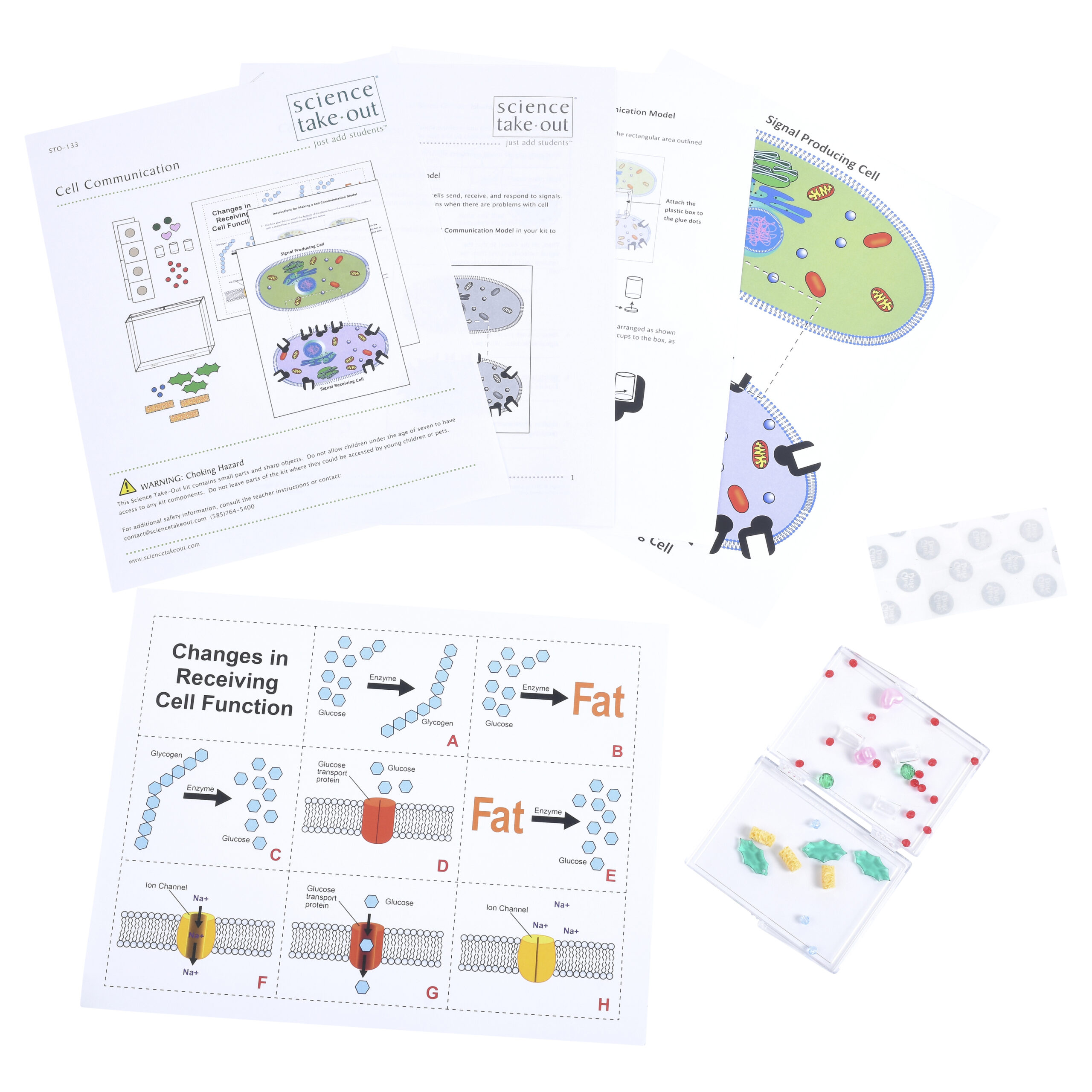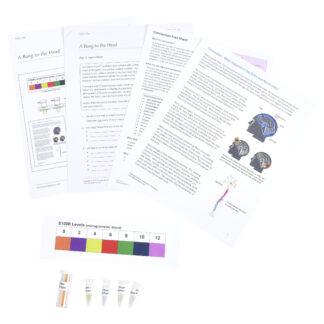Cell Communication
$13.95 – $106.95Price range: $13.95 through $106.95
Quantity Discounts Available! →
Create a model to illustrate cell communication.
- Create a model to explore how cells send, receive, and respond to signals.
- Use this model to illustrate cell communication involved in regulating blood sugar level and in nerve cell action.
Kit Includes
- Student instructions
- 1 clear plastic box with lid
- Glue dots
- 3 small plastic cups (receptors)
- Assorted beads (chemical signal molecules)
- 3 small sponges (receptor blockers)
- Signal Producing Cell and Receiving Cell diagrams
- Instructions for How To Make a Cell Communication Model
- Diagram cards – Changes in Receiving Cell Function
Quantity Discounts
Kits:
- 1 – 9 kits: $13.95 each
- 10 – 24 kits: $13.25 each
- 25+ kits: $12.56 each
Unassembled:
- 1 – 9 packs: $106.95 each
- 10+ packs: $101.60 each
Refills:
- This kit does not require refills since all its contents are reusable.
Correlation to Next Generation Science Standards (NGSS) Shop by NGSS »
Performance Expectations:
MS-LS1-2. Develop and use a model to describe the function of a cell as a whole and ways parts of cells contribute to the function.
Science & Engineering Practices
Developing and Using Models - Develop and use a model to describe a phenomenon.
Disciplinary Core Ideas
LS1.A: Structure and Function - Within cells, special structures are responsible for particular functions, and the cell membrane forms the boundary that controls what enters and leaves the cell.
Crosscutting Concepts
Structure and Function - Investigating or designing new systems or structures requires a detailed examination of the properties of different materials, the structures of different components, and connections of components to reveal its function and/or solve a problem.





